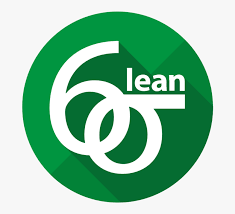- Corporate
- 76 (Registered)
-
(0 Review)

Six Sigma Green Belts are paraprofessionals who have been trained on the Six Sigma improvement methodology and work on a data-driven approach to eliminate defects in any process. The Six Sigma Green Belt Certificate Program focuses on creating a mindset and culture shift that eliminates marginal methods used in traditional contexts, replacing them with a set of tools that produce exceptional results and strive for near-perfection. These certified professionals work to support, or under the supervision of a Six Sigma Black Belt. They work on continual quality improvement by analyzing and solving quality problems, and creating a high performance organization. This course will give you a thorough understanding of Six Sigma and its focus on eliminating defects through process improvement and variation reduction. With a comprehensive courseware that systematically covers all objectives of the exam, the course is aimed at helping you achieve a first time pass of the ICGB exam. This certificate is a reflection of your ability to ably perform as part of a Six Sigma project for business improvement and help the organization gain far-reaching benefits.
Prerequisites
While there are no prerequisites required to appear for the IASSC Certified Lean Six Sigma Green Belt Exam, it is recommended that those sitting for the exam have some degree of real-world Lean Six Sigma work and project application experience and have undergone the Lean Six Sigma training through a qualified institution (such as KnowledgeHut). For more about this please visit the FAQs page
Who can Attend:
The Six Sigma Green Belt program is designed for professionals and students who want to develop the ability to lead process-improvement initiatives. An indicative list of participants in could include:
- Financial/business analyst
- Commodity manager
- Project manager
- Quality manager
- Business development manager
- Manufacturing process engineer
- Continuous improvement director
- Business managers or consultants
- Project manager/Program Manager
- Director or VP of Operations
- CEO, CFO, CTO
Course Content
Curriculum is empty
Curriculum
- The Basics of Six Sigma
- Meanings of Six Sigma
- General History of Six Sigma & Continuous Improvement
- Deliverables of a Lean Six Sigma Project
- The Problem Solving Strategy Y = f(x) 1.1.5 Voice of the Customer, Business and Employee
- Six Sigma Roles & Responsibilities
- Defining a Process
- Critical to Quality Characteristics (CTQs)
- Cost of Poor Quality (COPQ)
- Pareto Analysis (80:20 rule)
- Basic Six Sigma Metrics: including DPU, DPMO, FTY, RTY Cycle Time, deriving these metrics and these metrics
- Building a Business Case & Project Charter
- Developing Project Metrics
- Financial Evaluation & Benefits Capture
- Understanding Lean
- The History of Lean
- Lean & Six Sigma
- The Seven Elements of Waste: a. Overproduction, Correction, Inventory, Motion, Over processing, Conveyance, Waiting
- Straighten, Shine, Standardize, Self-Discipline, Sort
- Cause & Effect / Fishbone Diagrams
- Process Mapping, SIPOC, Value Stream Map
- X-Y Diagram
- Failure Modes & Effects Analysis (FMEA)
- Basic Statistics
- Descriptive Statistics
- Normal Distributions & Normality
- Graphical Analysis
- Measurement System Analysis
- Precision & Accuracy
- Bias, Linearity & Stability
- Gage Repeatability & Reproducibility
- Variable & Attribute MSA
- Process Capability
- Capability Analysis
- Concept of Stability
- Attribute & Discrete Capability
- Monitoring Technique
- Patterns of Variation
- Multi-Vari Analysis
- Classes of Distributions
- Inferential Statistics
- Sampling Techniques & Uses
- Central Limit Theorem
- Hypothesis Testing
- General Concepts & Goals of Hypothesis Testing
- Significance; Practical vs. Statistical
- Risk; Alpha & Beta
- Types of Hypothesis Test
- Hypothesis Testing with Normal Data
- 1 & 2 sample t-tests
- 1 sample variance
- One Way ANOVA: a. Including Tests of Equal Variance, Normality Testing and Sample Size calculation, performing tests and interpreting results.
- Hypothesis Testing with Non-Normal Data
- Mann-Whitney
- Kruskal-Wallis
- Moods Median
- Friedman
- Sample Sign
- Sample Wilcoxon
- One and Two Sample Proportion
- Chi-Squared (Contingency Tables): a. Including Tests of Equal Variance, Normality Testing and Sample Size calculation, performing tests and interpreting results.
- Simple Linear Regression
- Correlation
- Regression Equations
- Residuals Analysis
- Multiple Regression Analysis
- Non- Linear Regression
- Multiple Linear Regression
- Confidence & Prediction Intervals
- Residuals Analysis
- Data Transformation, Box Cox
- Lean Controls
- Control Methods for 5S
- Kanban
- Poka-Yoke (Mistake Proofing)
- Statistical Process Control (SPC)
- Data Collection for SPC
- I-MR Chart
- Xbar-R Chart
- U Chart
- P Chart
- NP Chart
- X-S chart
- CumSum Chart
- EWMA Chart
- Control Chart Anatomy
- Six Sigma Control Plans
- Cost Benefit Analysis
- Elements of the Control Plan
- Elements of the Response Plan
Course Details
Duration: 3 Days
Venue: TBA
Career Pathways
- Learn the principles and philosophy behind the Lean Six Sigma method
- Learn to apply statistical methods to improve business processes
- Design and implement Six Sigma projects
- Learn the DMAIC process
- Work on root cause analysis and basic statistical analyses on process measurements
- Learn to identify and control wasteful processes
- Learn to evaluate daily activities, to reduce cycle times, and improve quality
- Evaluate problems, statistically and quantitatively
- Support and assist Black Belts
- Increase profitability using Lean Six Sigma methodology
- Prepare for the IASSC Lean Six Sigma Green Belt certification extra
- 35 PDUs
- High-quality training from experienced instructor
- Downloadable courseware
- Improve quality by analyzing and solving quality issues
- End-to-end support via phone, email and chat
- Free 180 days access to Lean Six Sigma Green Belt e-Learning
Certification
0 rating





